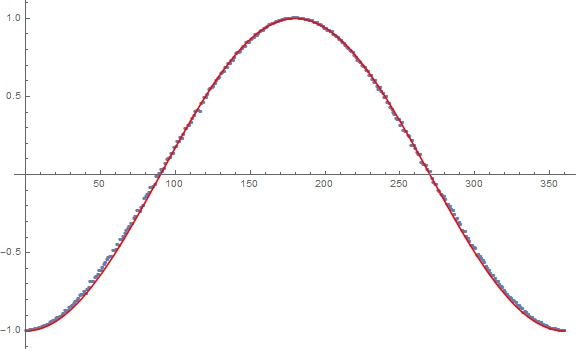So I was playing around with John Reed's Mathematica version of Michel's epr-simple simulation and discovered that it can produce the -cosine curve without using the angle "e" for the particles. It now depends only on lambda, a and b. So the particles are only "carrying" lambda. Here are the links;
EPRsims/EPRBsimJC_JR_MF.nb Mathematica notebook file.
EPRsims/EPRBsimJC_JR_MF1.pdf PDF of notebook with results

So this may be the most simple way to simulate EPR-Bohm giving the full -cosine curve using +/-1 outcomes for A and B with one degree resolution for the a and b angle difference. Of course Joy's S^3 simulations probably have the best physics explanation.

